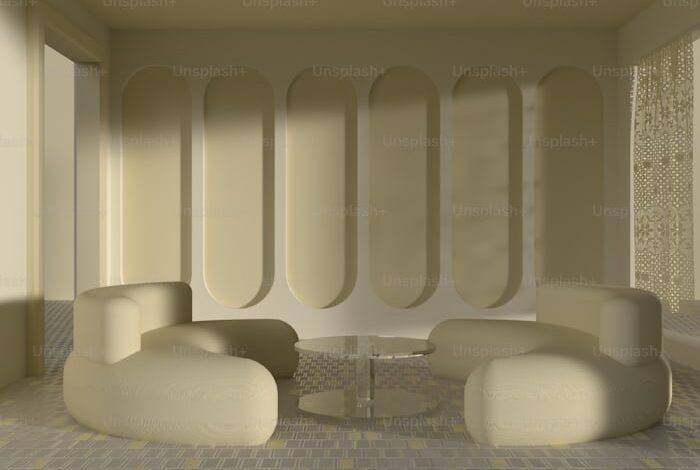Transform Your Space with Acoustic Wall Solutions

In the quest to create functional and visually appealing environments, acoustic wall solutions have emerged as a game-changing tool. These solutions enhance sound quality while adding style to any space. This article explores the benefits of acoustic wall solutions, the types available, their impact on sound and aesthetics, examples of beneficial spaces, and future trends in acoustic wall technology.
Introduction to Acoustic Wall Solutions and Their Benefits
Acoustic wall solutions are designed to manage sound within a space, reducing noise levels and improving sound clarity. They are essential for creating comfortable environments where speech is intelligible, and background noise is minimized. The primary benefits include:
- Noise Reduction: Acoustic walls significantly reduce noise levels, creating a quieter and more peaceful environment.
- Sound Quality: By controlling sound reflections and reverberations, these solutions enhance the clarity and quality of sound.
- Privacy: Acoustic walls provide soundproofing, ensuring privacy in both commercial and residential settings.
- Aesthetics: Available in various designs and finishes, acoustic walls can enhance the visual appeal of any space.
- Productivity: In work environments, reduced noise levels lead to increased concentration and productivity.
Types of Acoustic Wall Solutions
There are several types of acoustic wall solutions, each catering to different needs and preferences:
Acoustic Panels
Acoustic panels are the most common solution, available in various materials such as fabric, foam, and wood. They absorb sound waves, reducing reflections and echoes. Acoustic panels are versatile and can be customized to match any interior design.
Acoustic Tiles
Acoustic tiles are smaller than panels and are often used in a grid pattern. They are ideal for spaces where a modular look is desired. Acoustic tiles come in various shapes, colors, and textures, providing both functional and aesthetic benefits.
Acoustic Fabrics
Acoustic fabrics are used in stretched fabric wall systems to cover walls and ceilings, providing a seamless and elegant solution for sound absorption. These fabrics are available in different patterns and colors, offering endless design possibilities.
Acoustic Baffles
Acoustic baffles are suspended from the ceiling and are particularly effective in large open spaces. They absorb sound from all directions and are available in various shapes and sizes, adding a unique visual element to the space.
Acoustic Wallpaper
Acoustic wallpaper combines sound absorption with decorative design. It is easy to install and provides an excellent solution for enhancing both the sound quality and aesthetics of a room.
Improving Sound Quality and Aesthetics
Acoustic wall solutions play a crucial role in improving both sound quality and aesthetics. By absorbing and diffusing sound waves, they prevent echoes and reduce background noise, ensuring clear and crisp sound. This is particularly important in environments where communication and sound clarity are essential, such as offices, classrooms, and entertainment venues.
In terms of aesthetics, acoustic walls offer a wide range of design options. From sleek modern panels to artistic fabric designs, these solutions can complement any interior style. They can be used to create feature walls, add color and texture, or provide a subtle backdrop that enhances the overall look of the space.
Examples of Spaces That Benefit from Acoustic Walls
Various spaces can benefit from the installation of acoustic wall solutions:
Offices
In open-plan offices, acoustic walls help reduce noise levels, creating a more productive work environment. They ensure privacy for meetings and phone calls, contributing to employee well-being and efficiency.
Educational Institutions
Classrooms, lecture halls, and libraries benefit from improved sound quality and reduced noise levels. Acoustic walls ensure that students can hear clearly and concentrate, enhancing the learning experience.
Hospitality
Restaurants, hotels, and conference centers use acoustic walls to create comfortable and inviting environments. Improved sound quality ensures that guests can enjoy conversations without being disturbed by background noise.
Home Theaters
Acoustic walls are essential in home theaters to create an immersive audio experience. They enhance sound clarity and prevent echoes, ensuring that viewers can enjoy movies and music to the fullest.
Healthcare Facilities
In hospitals and clinics, acoustic walls contribute to a quieter and more restful environment. They ensure patient privacy and reduce stress levels by minimizing noise.
Future Trends in Acoustic Wall Technology
Smart Acoustic Solutions
Integration of smart technologies, such as sensors and IoT connectivity, allows for real-time monitoring and adjustment of sound levels. This innovation provides an adaptive acoustic environment tailored to specific needs.
Sustainable Materials
There is a growing trend towards using eco-friendly and sustainable materials in acoustic solutions. Recycled materials and biodegradable options are becoming more popular, aligning with global sustainability goals.
Customization and Personalization
Advancements in manufacturing technology enable greater customization of acoustic wall solutions. From bespoke designs to personalized patterns, the possibilities are expanding, allowing for unique and tailored installations.
Multifunctional Designs
Future acoustic walls are likely to combine sound absorption with other functionalities, such as lighting and digital displays. This multifunctional approach enhances both the aesthetic and practical value of the solutions.
Conclusion
Acoustic wall solutions are a vital tool for transforming spaces, improving sound quality, and adding aesthetic value. With ongoing advancements in technology and design, the future of acoustic walls promises even greater innovation and application possibilities. Whether in commercial, residential, or public spaces, these solutions offer significant benefits that enhance the overall environment.





